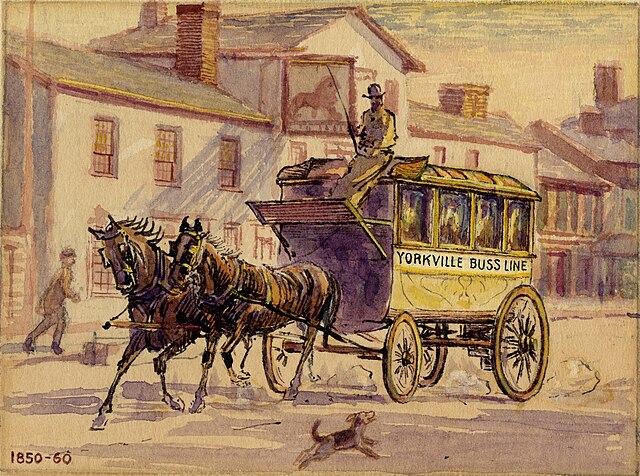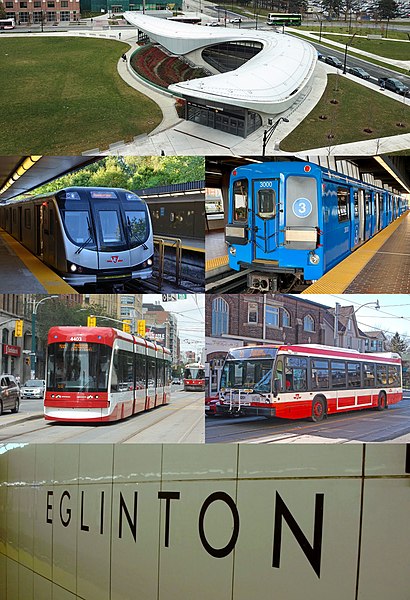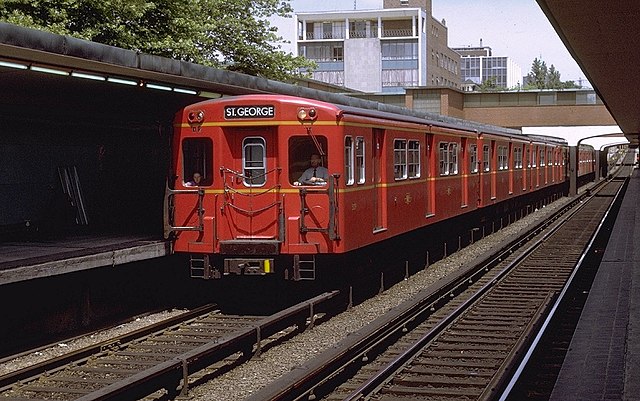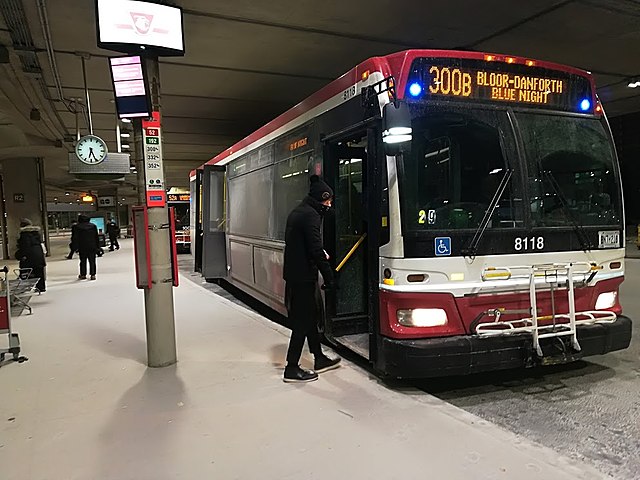Public transportation in Toronto
Public transportation in the Canadian city of Toronto dates back to 1849 with the creation of a horse-drawn stagecoach company. Today, Toronto's mass transit is primarily made up of a system of subways, buses, and streetcars, covering approximately 1,200 km (750 mi) of routes operated by the Toronto Transit Commission (TTC) and inter-regional commuter rail and bus service provided by GO Transit.
Union Station is a major transportation hub in Toronto, with public transit agencies GO Transit and the Toronto Transit Commission operating from the station.
Established in 1849, Williams Omnibus Bus Line was the first mass transit system in the city, operating four horse-drawn stagecoaches from St. Lawrence Market to the Yorkville.
Streetcar operated by the Toronto Railway Company, c. 1895
Toronto Transportation Commission bus in Yorkville in 1923
Toronto Transit Commission
The Toronto Transit Commission (TTC) is the public transport agency that operates bus, subway, streetcar, and paratransit services in Toronto, Ontario, Canada, some of which run into the Peel Region and York Region. It is the oldest and largest of the urban transit service providers in the Greater Toronto Area, with numerous connections to systems serving its surrounding municipalities.
From top, clockwise: York University station, an S-series rapid transit train, a Nova Bus bus, wall tile signage at Eglinton station featuring the Toronto Subway typeface, a Flexity Outlook streetcar, and a Toronto Rocket subway train
Two buses used by the TTC, 1936. The left bus was used by the agency's intercity bus line, whereas the right was used for local bus routes.
The TTC's slogan, "Ride the Rocket," originates from the red-painted G-series trains that were in service from 1954 to 1990.
A passenger boards an Orion VII bus owned and operated by the TTC in Toronto Pearson International Airport. The TTC operates the third-largest fleet of buses in North America.








